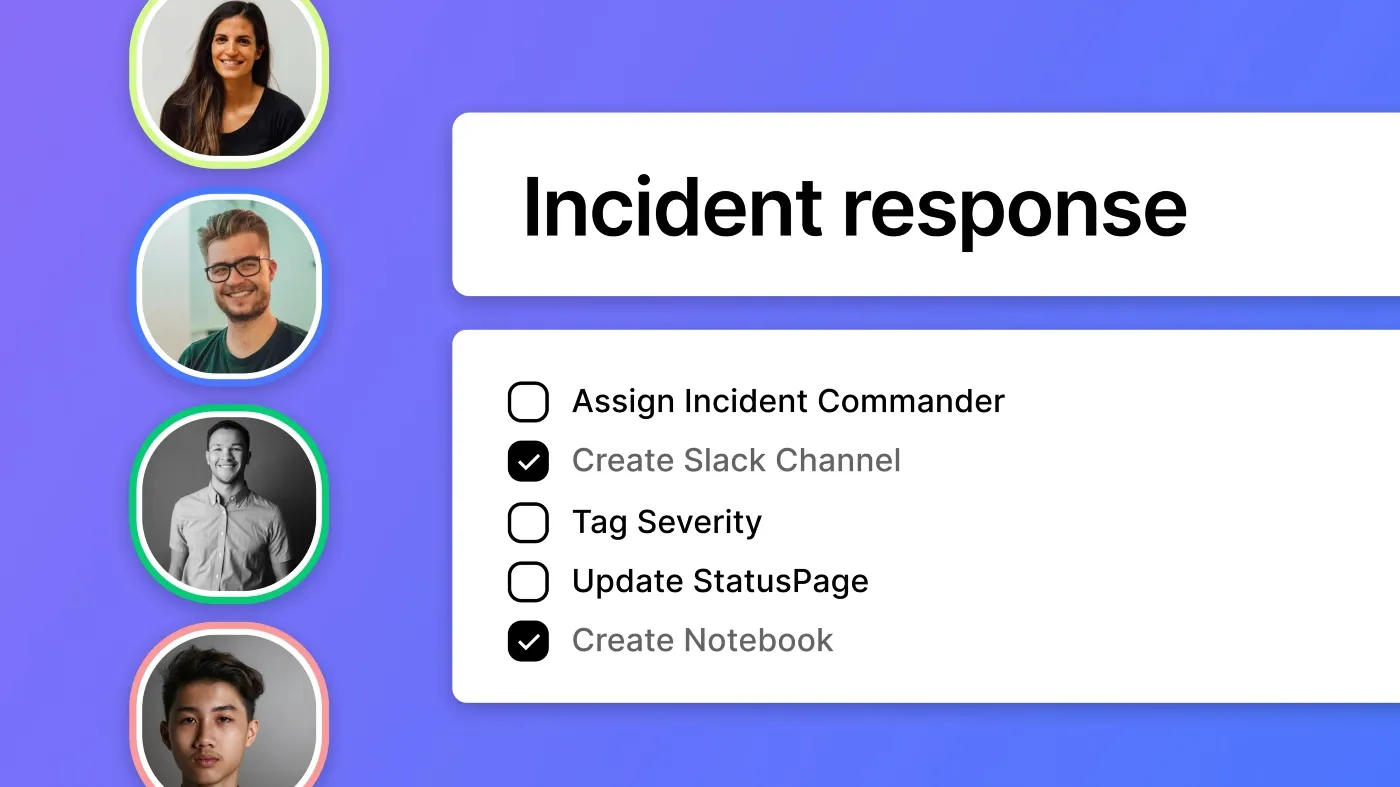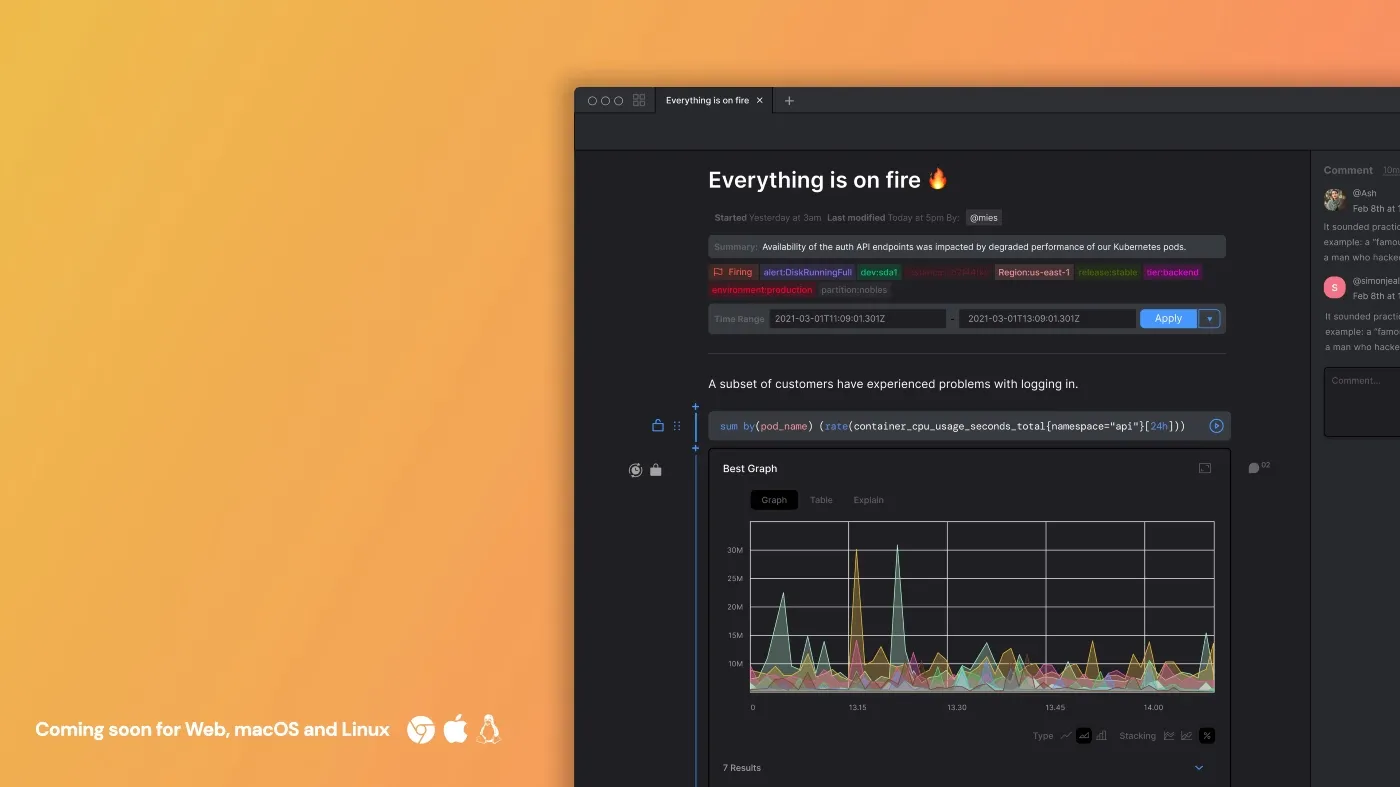Collaboration for DevOps and SREs is busted. As DevOps and site reliability engineers, we’ve pushed the envelope for deployment, orchestration and scaling. We’re solving again and again complex problems around infrastructure, and we’ve automated substantial parts of our stack. While what we do has grown in complexity, how we do it has been a disjoint, painful experience. At Fiberplane, we’ve set out to bring deep collaboration to the DevOps and SRE space.
As we laid out our vision for enhanced collaboration for SRE’s and DevOps engineers, we’re excited to share about where we are headed with Fiberplane to make that vision a reality.

resolving incidents and outages is our first use-case we’ve been working hard on at Fiberplane. Infrastructure incidents are not just painful because you get paged in the middle of the night whilst you actually should be sleeping, they’re also particularly painful because of the completely disjoint experience of debugging them.
The current status quo of incident debugging is going back and forth between metrics, logs and traces in order to figure out what exactly is going wrong, and where. For DevOps and SREs it is also hard to uniformly communicate around a disparate set of tools. Add the complete lack of collaborative features to the existing suite of tools and you have a very fragmented incident investigation.
Collaborative Notebooks for SRE’s
At Fiberplane we’ve taken the notebook form-factor made popular by data science and mapped it to SRE and DevOps engineering tasks. Outages are stressful enough as they and better solved with friends. We’ve built collaboration in from the get-go making Fiberplane purpose-built for teams.

Jupyter Notebooks have proven themselves in the data science space as a great form-factor for analyzing and exploring data. Notebooks are interactive playgrounds where you can test hypotheses and come to conclusions. They are also transparent and open; any one on your team can see how you’ve come to your conclusions, and the actions you have taken based on the data.
Notebooks are also well suited for capturing knowledge and best practices. Put them in a Fiberplane’s programmable environment, and now you can actually execute and run your best practices.
Pushing the Technology Envelope with Rust and WebAssembly
Through a combination of slick UI and forward-thinking technological choices, we are on a mission to enhance team work for DevOps and SREs. Over the past few months, we’ve built the core of our collaborative experience using the Rust programming language and WebAssembly, which allows us to build high-performance solutions in the browser today. We’re looking forward to expand on this via open source WebAssembly-based plugins that can be written by the Fiberplane community at large.
Growing our team
To keep building the novel, parameter-changing product for DevOps and SREs, we need great people. We’ve got some cool ideas on how to expand Fiberplane but of course need great people to build an amazing product. To that end, we’re excited to announce that we’ve raised a EUR 7.5m seed round co-lead by Crane Venture Partners and Notion Capital. Crane is one the most experienced infrastructure seed funds in Europe and as a second-time Notion portfolio company, it is a vote of confidence to be part of the Notion family again. Northzone has a fantastic track record of scaling companies and great to have found a partner with strong expertise in scaling companies. System.One and Basecase Capital are also participating, both outstanding infrastructure-centered funds that any DevTool startup would want on their cap table. We also have the backing of several industry leaders participating in this round and bringing on their insights and networks.

